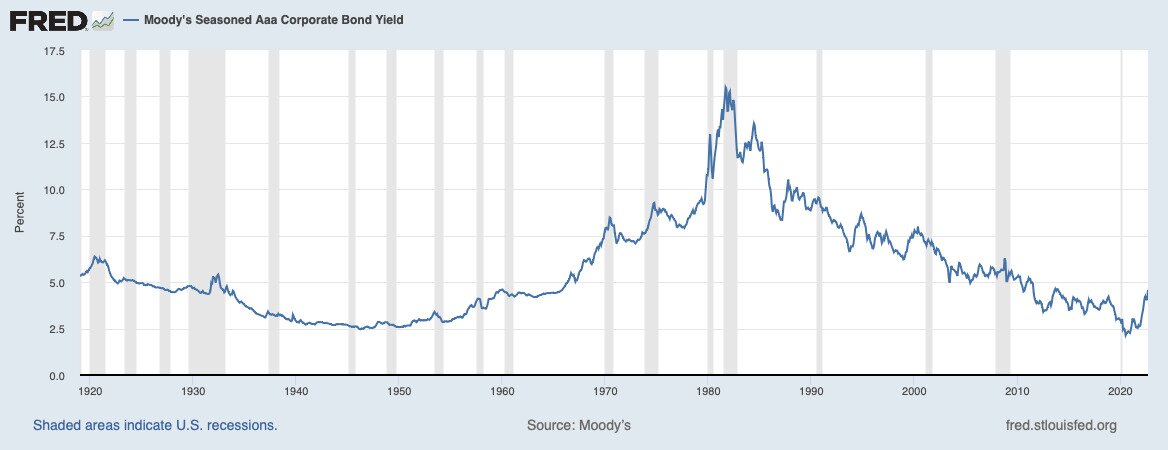- >News
- >Why Investors Are Using Bitcoin as a Bond Replacement
Why Investors Are Using Bitcoin as a Bond Replacement
Bitcoin may have weathered a bear market in 2022, but it remains one of the best-performing assets of the past decade. Indeed, if you had bought some of the cryptocurrency in 2012, you would be sitting on a profit of over 150,000% right about now. And while traders who entered the market during the peaks of 2021 may be in the red at the moment, pretty much everyone who entered before the end of 2020 is looking at a significant profit.
At the same time, the past few years have witnessed a sea change in how Bitcoin is perceived by retail investors and the financial service industry. Dozens of banks have rolled out custody or brokerage services in recent months, while even massive hedge funds such as BlackRock have launched their own private bitcoin spot funds, testifying to the reputability the original cryptocurrency has gained since the famous 2017-18 bull market.
This shift has occurred in parallel with a shift in the reputation of more ‘traditional’ assets such as stocks and bonds, with the Bloomberg US Aggregate Index (of corporate bonds) having declined by 16.5% since the start of the year, making 2022 one of the worst years on record for bond prices.
However, what may be a crisis for bonds is likely a golden opportunity for bitcoin, which could capitalize on a sustained decline in bond prices by attracting more mainstream investors. As such, even with its difficult year, 2022 could end by seeing Bitcoin become a core part of a growing number of portfolios.
Why Bonds Have Lost Their Charm
Historically, bonds have been a key part of a diversified portfolio for two reasons: 1) they offer a fixed income and 2) they’re generally less risky than stocks.
Unfortunately, the past couple of years have severely weakened the case for bonds. Because while global macroeconomic difficulties have resulted in rising yields for most bonds, such yields have fallen far below prevailing rates of inflation, making bonds less attractive. At the same time, the prices at which bonds trade have fallen, meaning that traders hoping for short-term profits from bonds have been consistently disappointed.
Pretty much every major index of corporate bonds has fallen. For example, the S&P US. High Yield Corporate Bond Index has dived from 767.97 at the start of 2022 to 671.32 at the time of writing, representing a fall of 12.5%. In the UK, bonds have collectively lost around £1.3 trillion in value since the beginning of the year, given that rising interest rates and difficult economic conditions make investing in corporate debt riskier.
Speaking about this dramatic fall in bond prices, Colin Legget — the investment director at digital asset manager Collidr — told the Financial Times in August that it was driving fund managers to look for alternatives.
“Few individual fund managers have actually worked through a fall in the bond markets of this scale.Many of them are either having to stick with a strategy that isn’t working anymore or are having to go through a steep learning curve to invest in alternative asset classes that they are unfamiliar with,” he explained.
Admittedly, corporate bond yields have increased over the past year, with Moody’s Seasoned Aaa Corporate Bond Yield index showing that the average interest rate on Aaa-rated corporate bonds in the US reached 4.59% in September.
Source: Federal Reserve Bank of St. Louis
While 4.59% would have been an excellent return a couple of years ago, it’s worth remembering that inflation in the US currently runs at around 8.2%. This means that investors are effectively paying to keep hold of bonds. To be fair, it’s possible that yields will continue to rise in the coming months, yet certain recent indicators have pointed to a recovery in the US economy, for example, implying that yield growth may slow down soon.
In other words, whichever way you look at it, bonds aren’t profitable at the present moment in time. Either investors will lose money on their resale value, or they will see their yields diminished by inflation.
Enter Bitcoin
This is where bitcoin enters the picture. With low profitability for bonds and also higher risks, bitcoin potentially offers higher rates of return.
Bitcoin has offered a positive return in every year of its life, save for 2022. Put simply, you would have made a profit from bitcoin if you’d bought $100, $1,000 or $10,000 of the cryptocurrency at the start of any given calendar year, notwithstanding the present one.
For example, in 2021 bitcoin appreciated by 59.6% (between January 1, 2021 and January 1, 2022), while the S&P 500 and the Nasdaq rose by 22% and 13%, respectively. Returning to the S&P US. High Yield Corporate Bond Index, it rose by a very modest 4.9%, while yields on Triple-A bonds barely moved.
The upshot of this is that bitcoin is exposed to much more positive volatility during expansionary phases of the economic cycle, and while it can contract more quickly during downturns, it’s arguable that its positive upside more than overcompensates for this.
This is particularly the case when taking a long-term view of bitcoin investment. For instance, BTC has risen in price by around 2,000,000% since early 2011, as well as by 222% in the past five years, not to mention by 450% since the beginning of 2019.
And the thing is, it really does seem like Bitcoin’s best days are still ahead of it. Corporations and institutions are increasingly taking it seriously as a reserve asset or hedge, while its number of active unique addresses remains well above levels seen several years ago.
Another significant development is that bitcoin has become noticeably less volatile in the second half of this year. It has had an average volatility of around 13% since the end of October, according to BitMex data, while the CBOE Volatility Index — which tracks the stock market — is currently higher at 25.75%.
Taken together, this shows that bitcoin has assumed many of the qualities that bonds now lack. Investors should therefore reconsider how they diversify their portfolio and spread risk, with bitcoin deserving a bigger place in the average portfolio compared to bonds, at least during a period of declining bond prices and below-inflation yields.


